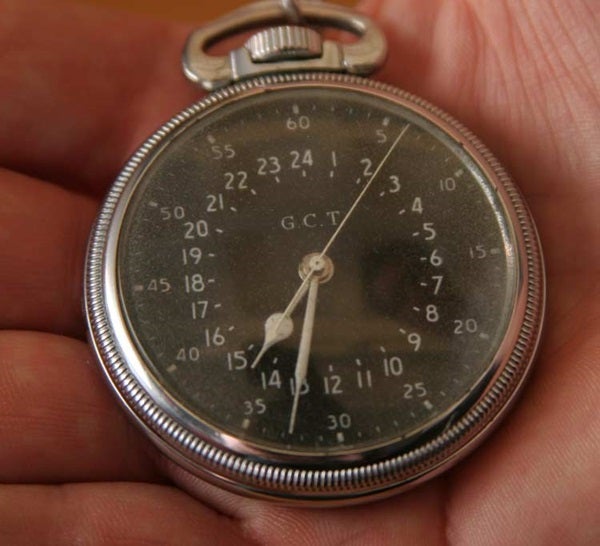But Steve Maddox, a watchmaker in North Little Rock, Arkansas, asked the right questions. “Until Jeff informed me that the difference between Earth time and Mars time was only about 40 minutes a day, I wasn’t sure it could be done either,” Maddox says. When he found out it was such a small difference, “I knew that I could accomplish the modification in a way that perhaps other watchmakers hadn’t considered,” he says.
After talking over the details, they decided a Hamilton 4992-B, the pocket watch used by U.S. Army and Air Force aviators during World War II and the Korean Conflict, would be the perfect starting point. Maddox told Moersch to buy the watch and he would do the work for free. A successful E-Bay bid procured the watch, and Maddox was off and running.
Maddox knew that by adjusting the escapement — the mechanism that controls the rate at which the mainspring of the watch unwinds — he could slow the Hamilton 4992-B to the needed rate.
Standard watches running on Earth time have escapements that tick at 18,000 beats per hour, or 300 beats per minute. The beat rate is controlled by a proper tuning of the moment of inertia of the “balance wheel” and the strength of the “balance spring.” Together, these components perform the same function that a pendulum and the gravitational force perform in a mechanical clock. The moment of inertia of the balance wheel in a pocket watch can be adjusted by a set of 14 to 20 balance screws around the wheel’s perimeter. “By simply changing the rate of the escapement, the rate of the watch can be changed without modifying any of the gearing, and that’s exactly the approach I took,” Maddox says.
The biggest challenge was calculating how many beats per hour would produce the desired lag of 39 minutes and 35.2 seconds in a 24-Earth-hour period. After a few false starts, he calculated an escapement tuned to 17,518.4 beats per hour would do the trick. A couple hours’ work with a watchmaker’s timing machine produced a modified watch that kept Mars time to within 2 seconds per day.
Moersch presented the watch to Squyres in the early autumn of 2003. To the best of anyone’s knowledge, it was the first mechanical watch ever made for keeping time on another planet. Unfortunately, when members of the MER engineering staff searched for a watchmaker to make Mars wristwatches for the team, Maddox was not approached. Instead, the scientists found a local watchmaker named Garo Anserlian in Montrose, California, who developed the same solution all over again for a wristwatch. Now these watches are ticking on a lot of wrists around the Jet Propulsion Laboratory in Pasadena, California.










